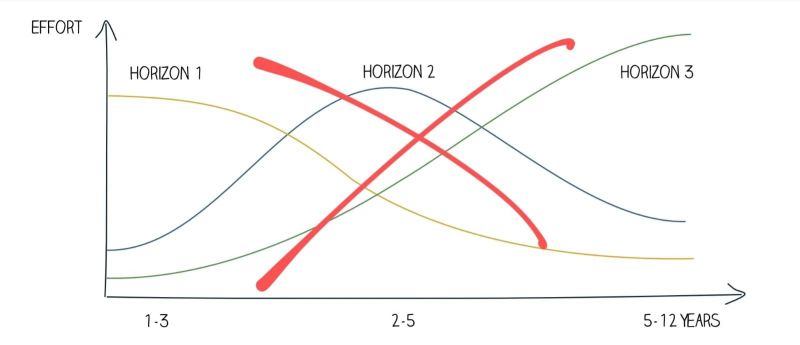Unpopular opinion: The Three Horizons model hasn’t aged well. It served as a framework to allocate innovation efforts as of 1999, but today, it’s a risk in itself for tech founders.
In the past month, I’ve had 3 convos with founders who were using this model.
It’s a classic McKinsey framework that splits strategy across 3 horizons:
- H1 (1‑3 yrs): protect & extend the core
- H2 (2‑5 yrs): build out adjacencies
- H3 (5‑12 yrs): place big bets on future disruption
At first glance, it seems like a structured way to plan long-term growth. In reality, it’s outdated.
Here’s why the 3 Horizons model hurts more than helps:
-
The timelines became ridiculous.
In highly innovative spaces like high tech / SaaS, 3 years feels like a lifetime. Teams reshuffle. Markets reset. But Horizon 3 assumes you get to play a 12-year game. You don’t. You get 12 months if you’re lucky.No one’s making it to H3 without getting eaten first.
-
The 3 horizons model “justifies” delay and procrastination.
Founders & management teams often label the boldest, highest-upside bets as H2 and H3 thinking they’ll get to them later. Meanwhile, a scrappy competitor ships v1 next quarter and outruns them. -
It blindsides you to disruption.
H1 targets keep teams busy optimizing today’s engine while tomorrow’s innovators are already reshaping the market in the midst of your Horizon 1.
Next week, I’m sharing a better approach that I’ve been using with teams in fast-changing environments.
Till then: What’s your take on the three horizons model? Have you used it? Does it still serve you?

